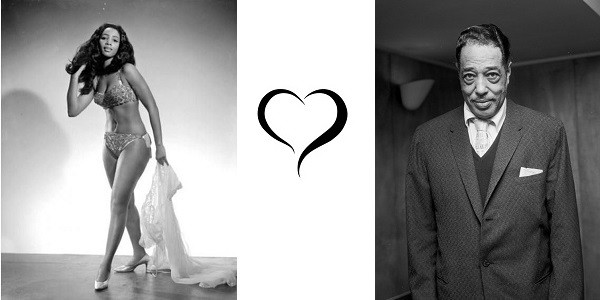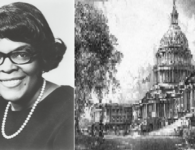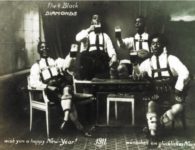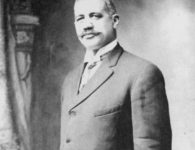Photo credits: Burlesque Hall of Fame/Reg Davis for Getty Images
Edward Kennedy Ellington (known more notably as Duke Ellington) was revered throughout 20th-century America for being one of the greatest jazz composers and performers of all time.
Affectionately called “The Duke,” Ellington (pictured right) was born in Washington D.C. on April 29, 1899. He started his music career as a young pianist in the late 1910s. By the time he reached his early thirties, Ellington had composed a plethora of big-time jazz tunes, which became timeless hits. He also became the leader of his very own orchestra.
However, unbeknownst to Ellington at that time, a woman who is known today as a trailblazing pioneer of facial and physical black female beauty was born a few years earlier in the U.S. city of Detroit, Michigan. Not only that, this gorgeous, trendsetting lady would later don a stage name in The Duke’s honor and romantically inspire his last biggest hit on the pop charts.
Toni Elling (pictured left) used to be a burlesque dancer who mesmerized audiences in her hometown of Detroit and beyond. Born Rosita Sims in 1929, Elling started professionally dancing in burlesque routines when she was in her early thirties; around the same age Ellington was when he became the leader of his world-famous orchestra.
Ellington died in 1974 at the age of 75. The last year of his life was also the last official year of Elling’s professional career as a bombshell dancing queen of the burlesque culture. She was also a successful pin-up model who helped black American women in that industry get the same brand of beauty glorification that their white female counterparts did.
According to Jazz Iz Magazine, Ellington’s last official pop-culture crossover song was titled “Satin Doll.” Released in 1953 on Capitol Records, the song was written by The Duke and his composition partner Billy Strayhorn. This hit was later remade in 1974 by the lovely Bobbi Humphrey, a jazzy lady whose skills on the flute helped take Blue Note Records to the next level.
Humphrey’s 1974 album was also titled “Satin Doll.” Her Blue Note-produced album’s title track also contains a briefly borrowed vocal performance of the song’s lyrical version, which was adopted by big-ticket songwriter and Capitol Records co-founder Johnny Mercer.
However, there is a legendary story about where the original inspiration of “Satin Doll” came from for Ellington.
The song was written and first released in 1953, which was also the year Black America’s Jet Magazine released a groundbreaking mid-September issue. The cover story was about the Americanized problem of pin-up modeling culture not being inclusive of black women.
A heart-stopping image of the gorgeous Etta Rae, another trailblazing ebony pin-up model, was plastered on the magazine cover.
In an article published in August 2015, the website of black beauty blogger Leila Noelliste’s enterprise showcases this historic issue of Jet and also praises Elling for her barrier-bashing career. Noelliste’s business and culture blog is also one of the many American research sources, which claims Ellington’s 1953 “Satin Doll” song was inspired by Elling.
“[Toni Elling is] said to be the inspiration behind Duke Ellington’s Satin Doll. Elling entered the world of burlesque in 1960 at the age of 32, which at the time would’ve been fairly late in the game. Despite age, Elling’s career lasted of more than a decade and she still performs today,” reads the 2015 article.
American music history buffs have also written that she affectionately gave herself the Toni Elling stage name in honor of The Duke himself.





















No comments